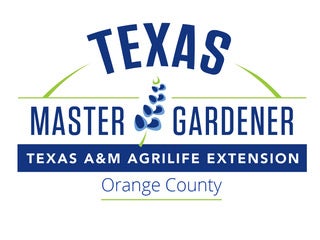Master Gardener’s: Pruning improves plant’s life and landscape appeal
Published 12:33 am Saturday, September 26, 2020
|
Getting your Trinity Audio player ready...
|
By Sheri Bethard
Orange County Master Gardener
What is pruning? Pruning is the removal or reduction of some parts that are no longer required by the plant. It is done to help add energy to the plant for the production of flowers, fruit, and limbs all remaining on it. It also helps improve the health, landscape appeal and/or value of the plant.
Before you start pruning, you should have a plan of approach. By doing so, you will reduce the amount of necessary and unnecessary cuts. First, you should look the plant over and identify any dead or diseased limbs, removing them. Next, look for lateral branches or water shoots and remove them. Those are the limbs growing straight up off other limbs.
Now, that you have opened up the plant some, you can step back and view it to get a better idea of what will need to be removed to gain your desired effect, be it a specific shape or to train the plant. Remember when trying to train a plant, it still has its natural growth habit it will always try to follow. Try to avoid removing the natural shape.
Look for areas of weak or narrow crotches, removing them along with a less desirable central leader when there are double leaders instead. Always, cut a little, then step back and look at what you have done before cutting to much off. You can always take away, but you can’t put back.
Pruning can be done anytime of the year and it will not kill the plant as old beliefs say. The best time to prune is when it will do the least amount of damage to the plant, not when you want to prune. The best time to prune plants is during winter when the plant is dormant after losing most of its leaves. You can see the limbs better and it is easier to determine which ones to remove. The early spring is also another good time to prune, just before the new growth starts coming out. When new growth is developing, it is best not to prune as the food that has been stored in the plants roots is now being used to develop new growth and this would tax that food storage and could result in your plant becoming dwarfed.
It is also suggested to limit pruning in late summer as new growth could be encouraged and it would not have time to harden off before the upcoming cold weather. Prune plants that were damaged by storms and again any dead limbs to reduce insect infestation or disease.
Pruning equipment is limited to just a few items and those much keep a sharp edge. There are many different tools you can use from pruners, loppers, pruning saws, pole saws to chain saws depending on the size of the limb. When your equipment is not in used, keep them in a dry room. Pick the right tool for the size limb you are cutting. Always disinfect your tools to avoid spreading disease from one plant to another. One-part bleach to nine parts water mixed is commonly used. Wipe down, dry and oil to keep rust at bay.
After cutting, there is no need to dress the wound. Wound dressing is mostly for cosmetics and has little to do with preventing insect or disease control. The one tree dressing should be used on is oak trees to help prevent the bark beetle from spreading the oak wilt disease.
When cutting make sure you have a good clean, smooth cut. Do not leave stubs as die back occurs. Avoid tearing limbs and bark when removing larger branches. When cutting back to an intersecting branch, cut at a 45-degree angle. Pruning also helps with air flow thru the plant.
One plant the general public does a “whack job” on is the beautiful Crape Myrtle. This plant is a tree not a bush as a lot of people try to make it into. I’ve seen many improperly pruned resulting in ugly black fungus around the cut areas even tho the trees do try to grow back. I will talk more about pruning Crape Myrtles in a couple of months and give some examples of proper pruning of them.
For your horticulture questions, please call our Hot Line 409 882-7010 Tuesday and Thursdays, 10 a.m. – 2 p.m. or send your questions to ocmg1990@gmail.com.
Thursday, October 15, we will resume in-person monthly meetings, from 6 p.m. – 8 p.m. in the Ballroom on the Orange County EXPO at 11475 FM 1442, Orangefield. All those in attendance MUST wear a face covering. We will maintain six feet apart for social distancing and hand sanitizer will be available. The public is invited to our meetings. For more information please email the link above.






